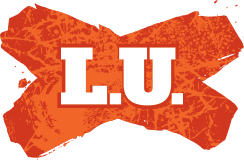FUIFUI_MOIMOI
Juniors
- Messages
- 2,448
http://www.smh.com.au/news/lhqnews/...t-grothe/2009/09/30/1253989954469.html?page=2
They're coming Reddy or not: how the Storm will target Grothe
Ben Everill | October 1, 2009
CRAIG BELLAMY knows it. Daniel Anderson knows it. And most Parramatta fans are aware of it. The biggest factor standing in the way of the Eels' first premiership since 1986 is their right-side defence and the combination of Joel Reddy and Eric Grothe.
The double whammy facing Parramatta is that one of their biggest weaknesses is up against Melbourne's (and perhaps the game's) best strike weapon in Greg Inglis. Melbourne will send their attack to the left, giving Inglis the opportunity to confront the Reddy-Grothe combination.
The Eels have conceded 43 tries through their right-side defence this season compared to 28 through their left side and Grothe has proved ineffective 36 per cent of the time he has attempted a tackle, which makes him a prime target.
Grothe has a tendency to rush up and in, sometimes putting pressure on those inside him to cover. He can end up in ''no-man's land'' - not up far enough nor back with his teammates.
The Grothe-Reddy defensive combination has held fairly steady throughout the finals, but the fact the Eels are even playing on Sunday comes down to a fortuitous intercept by Grothe against the Dragons at Kogarah Oval when he found himself in between the ball-runners rather than in front of one and Jamie Soward gifted him the football. Had Soward passed a fraction earlier the result could well have been different.
As our diagrams show, Melbourne can use the same simple left shift across the field to expose the Eels. Diagram A shows how with just one flat running forward (Ryan Hoffman) on the left edge and a looping fullback (Billy Slater) the Storm can create indecision in the Eels defence and force an overlap if Grothe comes in but fails to cut off the ball. The Storm used this play, and variations of it, effectively in their previous matches against Manly and the Broncos.
The beauty of this simple shift is that Hoffman can also receive a flat pass as a variation to the ball out the back, which puts him one-on-one with halfback Jeff Robson. The Storm scored their opening try against Manly after Hoffman received the ball in this fashion and offloaded to keep the shift going, leading to a Slater four-pointer.
Even if Robson brings Hoffman down it is likely to result in a quick play-the-ball, so Cameron Smith can pick and choose where to attack.
While Diagram A is the simplest of left side shifts, Bellamy and his team are capable of much better, and showed as much against the Broncos.
Inglis' sensational somersaulting try nearing half-time in the left corner was the result of a well-worked shift play that incorporated more decoys and had Justin Hodges rushing up and leaving his winger posted.
Diagram B shows how the ball comes across the field from Cooper Cronk to Brett Finch, who then has short-ball options both on the outside and inside, drawing in defenders.
Instead of hitting either man, he fires out the back to a looping fringe running forward in Hoffman, which creates a three-on-two situation against the outside backs. This is where Reddy and Grothe need to be on their game as Inglis and Dane Neilsen will be on the outside yet Hoffman will also be coming at them, stretching the cover defence. If Reddy goes up, Grothe must also, but if Grothe jams in, Reddy needs to slide across and be ready to cover the pass to the outside.
Adding more pressure is the variation of kicking the ball through (Diagram D), a tactic through which the Bulldogs scored twice (through Bryson Goodwin and Josh Morris) on the left last weekend. Grothe came rushing in on Hazem El Masri, allowing the Dogs winger to kick in behind him for Goodwin to score.
''Playing on that right side is pretty hard as most teams like to pass right to left, but Eric's done a great job and I think Jeff Robson and Ben Smith inside him have been killing it which gives us a unit there in defence,'' Reddy said leading into the biggest game of his life. ''It obviously doesn't always work out for us - the Bulldogs scored two tries on our side last week, but so long as we keep working for each other and doing what we've been doing it should be all right.
''We're always calling 'rush' to get up off the line, and from there it really is about peripheral vision - you've got to know where your player is and you've got to know where your inside and outside man is and make quick decisions.
''You can retreat back early and talk the opposition man up a bit but once you've moved up anything can happen and you've just got to back yourself. If I go in, Eric has to come in and if I hold out, he should hold out. It's a bit of a scramble out there sometimes and maybe they might make a break but if we scramble hard enough, we can hopefully mop it up.''

